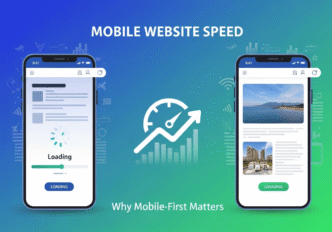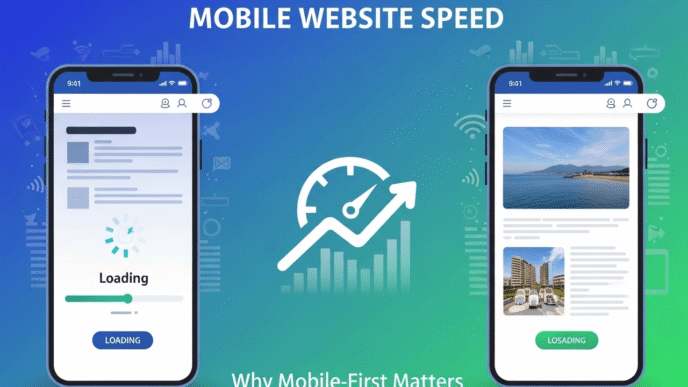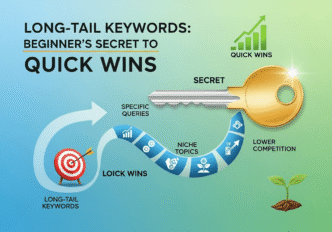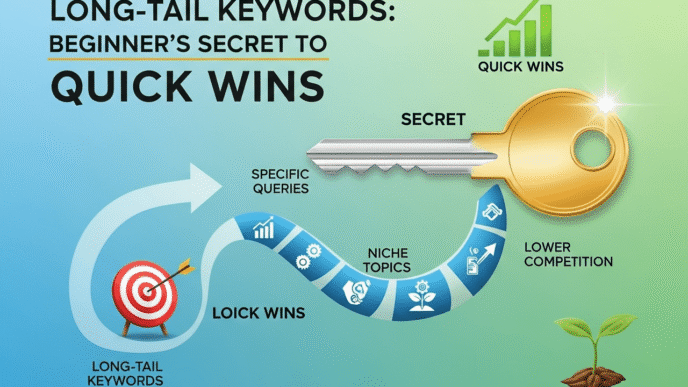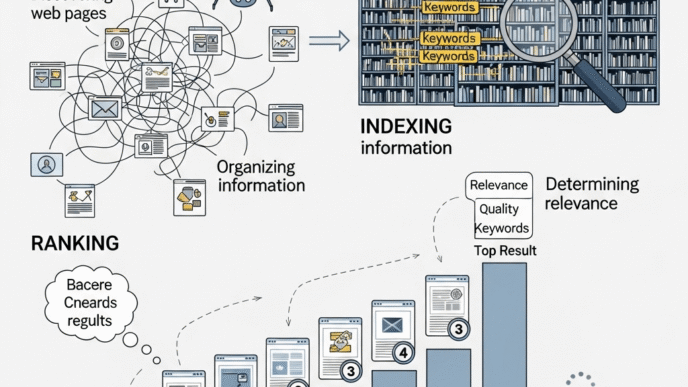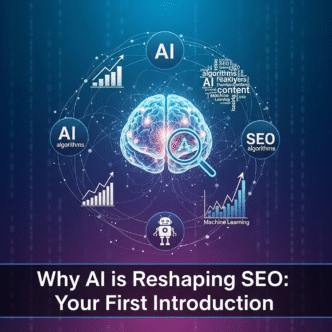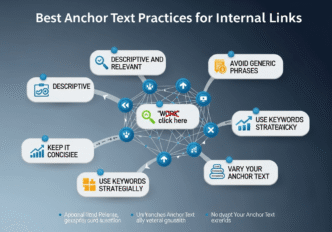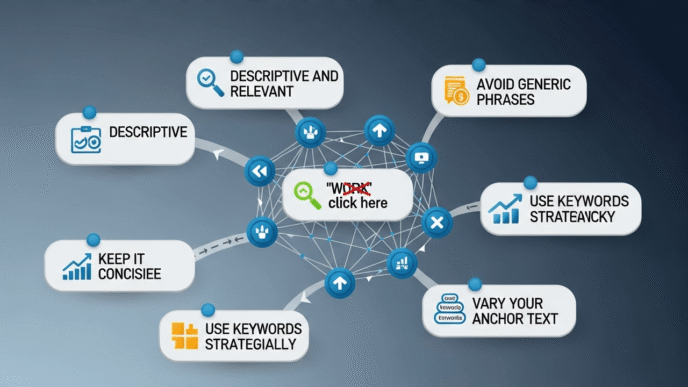Ever wonder why some websites magically appear at the top of Google while others get buried in the digital graveyard? Here’s a plot twist: it’s not just about having great content (though that helps). The secret sauce often lies in something as simple as your title tag optimization.
Think of your title tag as your website’s pickup line. It’s the first thing people see in search results, and honestly, you’ve got about 3 seconds to make them swipe right on your content instead of scrolling past to your competitor.
Table of Contents
ToggleWhat Exactly Is Title Tag Optimization?
Let’s start with the basics because I know some of you are thinking, “Title what now?”
Title tag optimization is the art and science of crafting HTML title elements that both search engines and humans find irresistible. It’s like writing a movie trailer for your webpage – you want to give away just enough to create intrigue without spoiling the whole plot.
Your title tag appears in three crucial places:
- Search engine results pages (SERPs)
- Browser tabs
- Social media shares
Miss the mark here, and you’re essentially invisible online. No pressure, right?
Why Do Title Tags Matter So Much for SEO?
Here’s where things get interesting. Google treats your title tag like a VIP pass to the search results party.
Search engines use title tags to understand what your page is about. It’s like giving Google a cheat sheet for your content. When someone searches for “best pizza in Brooklyn,” Google scans millions of title tags to find the most relevant matches.
But here’s the kicker – it’s not just about stuffing keywords anymore. Google’s gotten smarter (scary smart, actually). The algorithm now considers:
- Click-through rates (CTR)
- User engagement signals
- Semantic keyword relevance
- Brand recognition factors
Pro Tip: “Title tags are like newspaper headlines – they need to inform, intrigue, and inspire action all within 50-60 characters. Master this, and you’ll see your organic traffic soar.” – SEO Industry Best Practice
How Long Should Your Title Tags Be?
This is where most people mess up. They either write novels or tweet-length titles that say nothing.
Google typically displays 50-60 characters in search results. Go over, and your title gets the dreaded “…” treatment. Nobody wants their brilliant headline chopped off mid-sentence.
Here’s the optimal title tag length breakdown:
| Device Type | Character Limit | Pixel Width |
|---|---|---|
| Desktop | 50-60 characters | ~600 pixels |
| Mobile | 50-55 characters | ~500 pixels |
| Social Media | 40-50 characters | Varies by platform |
Long-tail keywords work great here because they’re naturally conversational. Instead of “SEO Tips,” try “How to Optimize Title Tags for Better Rankings” (if it fits your character limit).
What Makes a Title Tag Irresistible to Humans?
Let’s talk psychology for a hot minute. Humans are predictably irrational creatures, and your titles should exploit this (in the nicest way possible).
The Curiosity Gap Technique
People can’t resist filling knowledge gaps. That’s why titles like “The One Title Tag Mistake 90% of Websites Make” work so well. You’ve created a mystery that demands solving.
Power Words That Convert
Some words just hit different. Sprinkle these high-converting keywords into your titles:
- Ultimate
- Complete
- Proven
- Secret
- Exclusive
- Instant
Numbers and Specificity
“7 Title Tag Best Practices” performs better than “Title Tag Tips” every single time. Specificity builds trust and sets clear expectations.
Pro Tip: “Use odd numbers (7, 9, 13) in your titles. Studies show they get 20% more clicks than even numbers. Your brain is weird like that.” – Digital Marketing Research
How Do You Research Keywords for Title Tags?
Keyword research isn’t just throwing darts at a board of popular terms. It’s strategic intelligence gathering.
Free Tools That Actually Work
- Google Keyword Planner: The OG of keyword research
- Ubersuggest: Great for long-tail keyword ideas
- AnswerThePublic: Shows what people actually ask about
- Google Search Console: Your own data goldmine
The Search Intent Detective Work
Not all keywords are created equal. Someone searching “title tag HTML” wants technical information. Someone searching “improve website ranking” wants results.
Match your title to the searcher’s intent:
| Search Intent | Title Tag Approach | Example |
|---|---|---|
| Informational | How-to, Guide, Tips | “How to Write SEO-Friendly Title Tags“ |
| Commercial | Best, Top, Review | “Best Title Tag Tools for 2025″ |
| Transactional | Buy, Download, Get | “Download Free Title Tag Checker“ |
What Are the Most Common Title Tag Mistakes?
I’ve audited thousands of websites, and these mistakes pop up everywhere. It’s like watching the same horror movie on repeat.
Keyword Stuffing (The 2005 Approach)
“SEO Title Tags SEO Optimization Title Tag SEO Best SEO” – Stop. Just stop. This isn’t 2005. Google will penalize you faster than you can say “algorithm update.”
Duplicate Title Tags
Having identical titles across multiple pages is like wearing the same outfit to every party. Google gets confused about which page to rank for which query.
Missing Brand Names
Your brand name should appear in most title tags, usually at the end. It builds recognition and trust. “Ultimate Guide to Title Tags | YourBrand”
Ignoring Mobile Users
60% of searches happen on mobile devices. If your title looks terrible on a phone screen, you’re losing more than half your potential traffic.
Pro Tip: “Test your title tags on actual mobile devices, not just desktop previews. What looks good on a 27-inch monitor might be unreadable on a 5-inch screen.” – Mobile SEO Expert
How Can You Write Title Tags That Convert?
Converting visitors starts with getting the click. Here’s your action-oriented formula for high-converting title tags.
The AIDA Framework for Titles
Attention: Grab them with power words Interest: Create curiosity or promise value Desire: Show the benefit they’ll receive Action: Use actionable language
Example: “Master Title Tag Optimization: The Complete Guide That Boosted Our Traffic 300%”
Emotional Triggers That Work
People buy (and click) based on emotion, then justify with logic. Tap into these feelings:
- Fear of missing out (FOMO)
- Desire for improvement
- Need for solutions
- Professional growth aspirations
A/B Testing Your Titles
Don’t guess – test. Tools like Google Search Console show which titles get higher click-through rates. Small tweaks can lead to massive improvements.
Which Tools Can Help Optimize Your Title Tags?
Let’s get practical. Here are the tools that’ll make your title tag optimization process smoother than butter.
Free Tools for Beginners
| Tool | Best Feature | Price | Best For |
|---|---|---|---|
| Yoast SEO | Real-time optimization | Free | WordPress sites |
| Google Search Console | Performance data | Free | All websites |
| SERP Snippet Optimizer | Preview generator | Free | Testing appearances |
| Portent Title Maker | Creative suggestions | Free | Inspiration |
Premium Tools Worth the Investment
- SEMrush: Comprehensive keyword research and competitor analysis
- Ahrefs: Deep backlink and ranking data
- Moz Pro: All-in-one SEO optimization suite
Each tool has its sweet spot. Start free, then upgrade based on your specific needs.
Real-World Success Stories: Title Tag Wins
Theory is great, but let’s see some real results from title tag optimization efforts.
Case Study 1: E-commerce Site Transformation
A small online retailer changed their product page titles from generic descriptions like “Blue Shoes – Size 10” to benefit-focused titles like “Comfortable Walking Shoes – Perfect for All-Day Wear | Brand Name.”
Results after 3 months:
- 45% increase in organic click-through rate
- 23% boost in conversion rate
- 67% improvement in long-tail keyword rankings
Case Study 2: Blog Content Optimization
A marketing blog updated their title tags using emotional triggers and power words. Instead of “Content Marketing Tips,” they used “Proven Content Marketing Secrets That Generated 1M+ Views.”
Results:
- CTR improved from 2.1% to 4.8%
- Average session duration increased by 35%
- Social shares doubled
Pro Tip: “Document your before and after metrics. Title tag changes can take 2-4 weeks to show full impact in search results, so patience is key.” – SEO Analytics Expert
Advanced Title Tag Optimization Strategies
Ready to level up? These advanced techniques separate the pros from the beginners.
Schema Markup Integration
Adding structured data can enhance how your titles appear in search results. Think rich snippets with star ratings, prices, or publication dates.
Seasonal and Trending Keywords
Update your titles based on seasonality and trending topics. “Holiday Title Tag Ideas for 2025″ performs better in December than “Title Tag Ideas.”
Local SEO Considerations
For local businesses, include location-based keywords: “Best Pizza Delivery in Downtown Chicago | Tony’s Pizza”
Voice Search Optimization
With voice search growing, optimize for conversational queries: “How Can I Improve My Website’s Title Tags for Better SEO?”
How Often Should You Update Title Tags?
Title tags aren’t “set it and forget it” elements. They need regular maintenance like a vintage car.
When to Update
- Quarterly SEO audits reveal opportunities
- Algorithm updates change ranking factors
- Business focus shifts or new products launch
- Seasonal trends emerge
- Competitor analysis shows gaps
What to Monitor
Track these metrics to guide your updates:
- Click-through rates in Google Search Console
- Ranking positions for target keywords
- Conversion rates from organic traffic
- Brand mention frequency
Critical Title Tag Pitfalls to Avoid in 2025
Even experienced marketers make these title tag optimization mistakes. Here’s what to watch out for:
The “Everything Kitchen Sink” Approach
Bad Example: “Best SEO Tools for Digital Marketing Agencies, Small Businesses, Content Marketing, Link Building, and Social Media Management 2025
This title tries to target every possible keyword and audience. It’s too long, unfocused, and won’t rank well for anything specific.
Good Example: “7 Best SEO Tools for Small Business Growth in 2025″
The Clickbait Trap
Titles like “This One Title Tag Trick Will Shock Google!” might get clicks initially, but they’ll hurt your credibility and increase bounce rates when the content doesn’t deliver.
Ignoring Search Intent Mismatch
If someone searches “title tag HTML code,” they want technical information, not a beginner’s guide to SEO optimization. Match your title to what users actually need.
The Brand Placement Mistake
Wrong: “YourBrand – Best Title Tag Guide for Beginners” Right: “Complete Title Tag Guide for Beginners | YourBrand”
Brand names at the beginning waste precious characters and reduce keyword visibility.
Pro Tip: “Avoid using years in your titles unless absolutely necessary. ‘Ultimate Title Tag Guide‘ ages better than ‘Ultimate Title Tag Guide 2025’ and won’t need constant updates.” – Content Strategy Expert
Essential External Resources for Title Tag Mastery
Here are the most valuable tools and guides to enhance your title tag optimization efforts:
Google’s Official Guidelines
Google’s Title Link Documentation provides authoritative guidance on how Google processes and displays title tags. This resource explains exactly what Google looks for and how titles get rewritten.
Advanced SERP Analysis Tools
Advanced Web Ranking’s SERP Features Report offers comprehensive data on click-through rates and how different SERP features impact title tag performance. Their research shows that Google is 57% more likely to rewrite tags that exceed the character limit.
SEO Community Research
Search Engine Land’s annual SEO research provides cutting-edge insights into title tag trends. Recent studies show that updating an existing title tag with an SEO-optimized one can increase page clicks by more than 437%.
2025 Statistics: The Data Behind Title Tag Success
The numbers don’t lie – title tag optimization delivers measurable results:
Click-Through Rate Impact
When Google chooses to rewrite a title tag, Google uses the H1 about 51% of the time. This means your H1 and title tag should work together strategically.
Character Length Statistics
Recent data shows that optimal title tag length is between 40 and 60 characters, with Google being more likely to rewrite longer tags.
Mobile Search Dominance
With nearly 55% of organic search traffic worldwide coming from mobile devices, your title tags must work perfectly on smaller screens.
AI Overview Integration Impact
AI Overviews now appear in over 13% of all searches, and this number continues climbing. Google’s AI Overviews now appear in more than 50% of all search results according to the latest data, marking a massive shift in how users interact with search results.
Trending AI/SEO Topics Impacting Title Tags
The SEO landscape is evolving rapidly with AI integration. Here’s what’s happening now:
AI Overviews and Title Tag Strategy
A key focus for title tags in 2025 is optimizing for AI Overviews and tools like ChatGPT, especially if they begin displaying title tags and sources more prominently. When your content appears in AI summaries, your title tag becomes even more critical for standing out among cited sources.
Voice Search Evolution
20% of searches on mobile devices are conducted via voice search, which means optimizing for conversational, natural language queries in your titles.
Machine Learning and Search Intent
Google’s algorithms are becoming more sophisticated at understanding search intent. 75% of marketers leverage AI to reduce the time spent on manual tasks like keyword research and meta-tag optimization, showing how AI is reshaping SEO workflows.
Zero-Click Search Growth
More than half of all Google searches generate no traffic for third-party websites, making it crucial to optimize titles that can capture attention even when users don’t click through.
Data Visualization: Title Tag Performance Metrics
| Metric | Impact | 2025 Benchmark |
|---|---|---|
| Optimal Length | 57% less likely to be rewritten | 40-60 characters |
| CTR Improvement | 437% increase possible | With optimization |
| Mobile Traffic | 55% of organic search | Mobile-first priority |
| AI Overview Presence | 50% of search results | Growing rapidly |
FAQ: Your Title Tag Questions Answered
What’s the difference between title tags and H1 tags?
Title tags appear in search results and browser tabs, while H1 tags are the main headings visible on your webpage. When Google rewrites title tags, it uses the H1 about 51% of the time, so ensure both elements work together.
Should I worry about AI rewriting my titles?
Not necessarily. Even if Google isn’t always selecting your set title for display, it still aids optimization. Focus on creating titles that serve both users and search engines effectively.
How do AI Overviews affect my title tag strategy?
AI Overviews already show title tags and sources, which is promising, but most strategies for ranking remain standard. The key is making your titles stand out among cited resources when your content appears in AI summaries.
What’s the impact of mobile-first indexing on titles?
With nearly 63% of organic search traffic on Google in the United States coming through a mobile device, your titles must be concise and compelling on smaller screens.
Can AI tools help with title optimization?
Absolutely. 75% of marketers leverage AI to reduce the time spent on manual tasks like keyword research and meta-tag optimization. Tools like ChatGPT can help generate variations, but human oversight remains essential.
How often should I update my title tags?
Monitor performance quarterly and update when you see declining CTRs or when major algorithm changes occur. Google updates its algorithms over 500 times per year, making regular optimization crucial.
Do numbers in titles really work better?
Yes, odd numbers are more effective in terms of attracting engagement and are seen as more trustworthy. However, avoid extremely high numbers that might intimidate users.
Your Title Tag Optimization Action Plan
Ready to transform your titles from boring to brilliant? Here’s your step-by-step roadmap.
Week 1: Audit Your Current Titles
- Export all title tags from your website
- Identify duplicates, missing titles, and keyword opportunities
- Check lengths and mobile appearance
- Analyze which titles appear in AI Overviews
Week 2: Keyword Research and Strategy
- Research primary and secondary keywords
- Analyze competitor title strategies
- Map keywords to specific pages
- Consider voice search patterns
Week 3: Rewrite and Optimize
- Craft new titles using the techniques above
- Include LSI keywords naturally
- Test different variations
- Optimize for AI Overview inclusion
Week 4: Implement and Monitor
- Update titles on your website
- Set up tracking in Google Search Console
- Monitor performance metrics
- Track AI Overview appearances
Final Verdict: Title Tags in the AI Era
Title tag optimization remains fundamental to SEO success, but the rules are evolving. With AI Overviews now appearing in more than 50% of all search results, your titles need to work harder than ever.
The winners in 2025 will be those who balance traditional SEO best practices with emerging AI considerations. Your title tag isn’t just competing for clicks anymore – it’s competing for inclusion in AI summaries and voice search results.
The Bottom Line
Updating an existing title tag with an SEO-optimized one can increase page clicks by more than 437%, proving that this foundational element still drives real business results. But success now requires understanding how AI Overviews, voice search, and mobile-first indexing affect your optimization strategy.
Remember, your title tag is often the first impression you make on potential visitors. Make it count. A well-optimized title tag can be the difference between a click and a scroll-past, between traffic and obscurity, between appearing in AI summaries or being ignored.
Start small, test everything, and don’t be afraid to iterate. The websites ranking #1 on Google didn’t get there by accident – they mastered the fundamentals while adapting to new AI-powered search realities.
Your SEO success in 2025 starts with titles that serve both traditional search and emerging AI systems. What will your optimized titles say about your content?
Pro Tip: “The best title tag in 2025 is one that accurately represents your content while making people curious enough to click, AND is structured in a way that AI systems can easily parse and cite. Master this balance, and you’ll dominate both traditional search and AI-powered results.” – AI SEO Strategist



